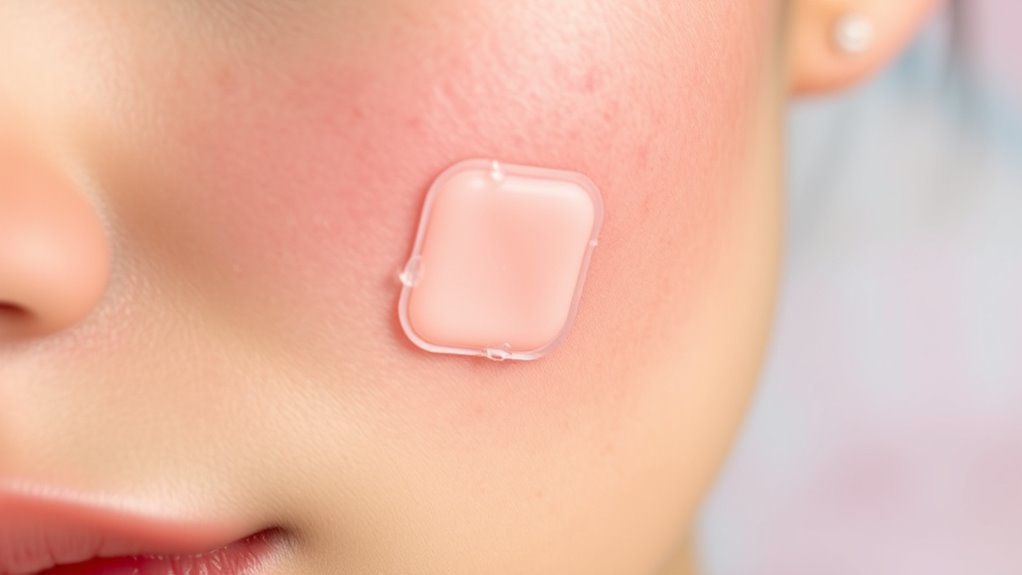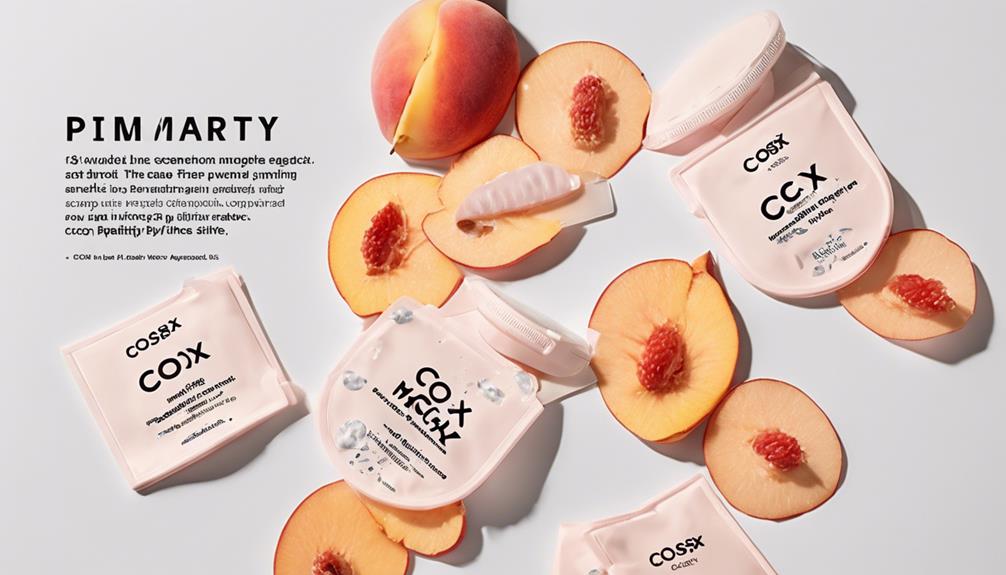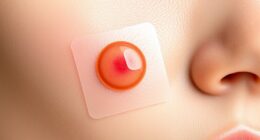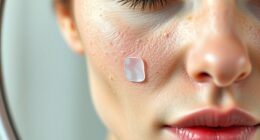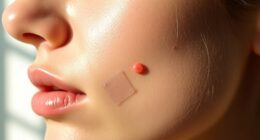Leaving pimple patches on too long can seriously damage your skin and slow down the healing process. Extended wear increases the risk of irritation, redness, and even infection. When patches become saturated, they can hinder healing instead of helping it. Plus, the overly sticky adhesive might cause discomfort during removal. It’s essential to monitor how your skin reacts and follow usage guidelines closely. Stay tuned for tips on ensuring effective and safe use of pimple patches.
Key Takeaways
- Leaving pimple patches on longer than 12 hours can cause skin irritation and increased sensitivity.
- Saturated patches, indicated by a color change, can hinder healing and risk infection.
- Overly sticky adhesives may cause discomfort and damage when removing the patches.
- Prolonged wear can lead to bacteria introduction, complicating the healing process.
- Close monitoring of skin reactions is essential to ensure effective use and prevent exacerbation of existing conditions.
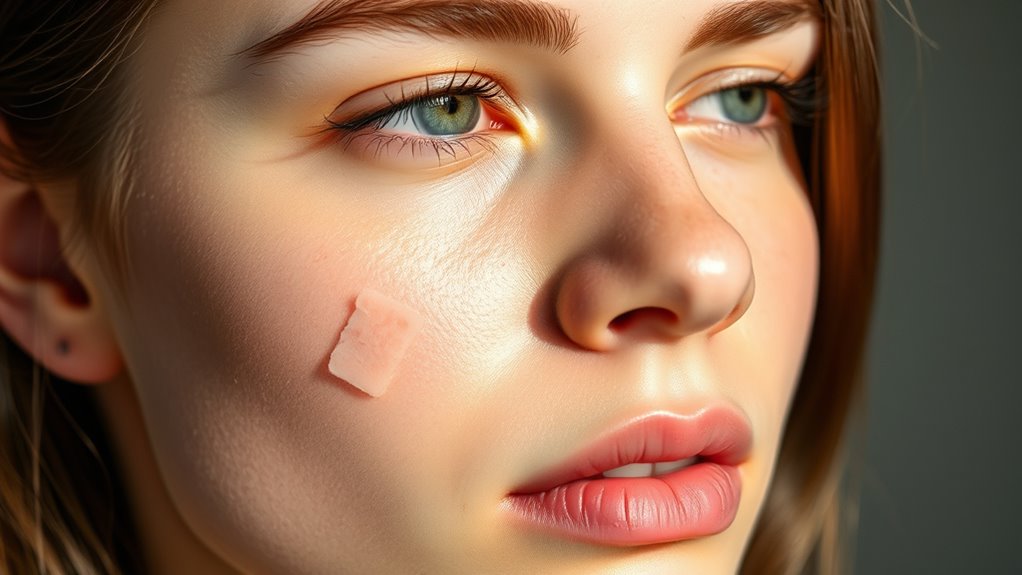
Have you ever wondered if leaving pimple patches on longer than recommended could harm your skin? It’s a common question, especially when you’re keen to speed up the healing process of those pesky breakouts.
While pimple patches are designed to help draw out impurities and promote healing, sticking to the recommended duration of 6 to 12 hours is vital. Prolonged contact can lead to skin irritation, redness, and increased sensitivity, which isn’t what you want when you’re trying to clear your skin. Digital literacy programs can help you understand how to use skincare products effectively. Additionally, maintaining a calm environment can reduce stress levels, which is essential for overall skin health. Regular skin treatments can also assist in enhancing your skin’s resilience and overall appearance.
When you keep a patch on too long, the adhesive can become overly sticky. This makes it difficult to remove the patch without causing discomfort or even damaging your skin. You might think you’re doing your skin a favor by leaving the patch on longer, but it could backfire.
If you notice the patch turning opaque or white, it’s time to replace the patch. This color change indicates that it has reached maximum absorption of fluids, and keeping it on longer won’t help the healing process. Additionally, using patches made with hydrocolloid material can enhance moisture retention and improve healing.
If you ignore the signs and continue using a saturated patch, you risk hindering the healing process. The longer the patch stays on, the more likely bacteria can be introduced into the area. This could lead to infections, which complicates your skin’s health even further.
It’s essential to monitor skin reactions closely. If you feel any irritation or discomfort, don’t hesitate to remove the patch. Prolonged contact can exacerbate any pre-existing skin conditions and make your situation worse, so maintaining regular skin treatments can help counteract potential damage.
Frequently Asked Questions
Can Pimple Patches Be Damaging?
Pimple patches can be damaging if used incorrectly. You might experience skin irritation or allergic reactions from prolonged wear.
If you leave them on too long, excess moisture can harm the surrounding skin, slowing down healing. Active ingredients in the patches could dry out or peel your skin, especially if you’re sensitive.
Monitor your skin closely; if you notice irritation or discomfort, it’s best to remove the patch immediately to avoid further damage.
What Is the Max Hours for a Pimple Patch?
Think of a pimple patch as a little shield, protecting your skin while it fights off invaders.
You can wear it for a maximum of 12 hours to let it work its magic effectively. If it starts to look opaque or white, it’s time to remove it.
Keep an eye on your skin’s sensitivity; some stubborn breakouts may allow for a longer wear, but always prioritize your comfort and skin health.
Is It Bad to Put a Pimple Patch on an Open Wound?
It’s not a good idea to put a pimple patch on an open wound. Doing so can introduce bacteria, increasing the risk of infection.
The adhesive might irritate the area, causing discomfort and delaying healing. Instead, after popping a pimple, use an antibiotic ointment to protect against infection.
If you’re unsure about treatment options for open wounds, consulting a dermatologist is always your best bet for safe and effective care.
Is It Better to Leave a Pimple Alone or Use a Pimple Patch?
Leaving a pimple alone might seem tempting, but using a pimple patch can be far more beneficial.
While untreated pimples can linger and risk irritation, a patch absorbs impurities, promoting quicker healing.
You’ll create a protective barrier that keeps bacteria at bay, reducing the chance of new breakouts.
Plus, patches maintain a moist environment, which helps minimize inflammation.
Conclusion
Leaving pimple patches on too long can actually do more harm than good. While they’re designed to absorb pus and oil, exceeding the recommended time can lead to skin irritation or impede healing. Notably, studies show that around 30% of people experience skin sensitivity when using these patches improperly. So, next time you reach for one, remember to follow the instructions—your skin will thank you for it!
